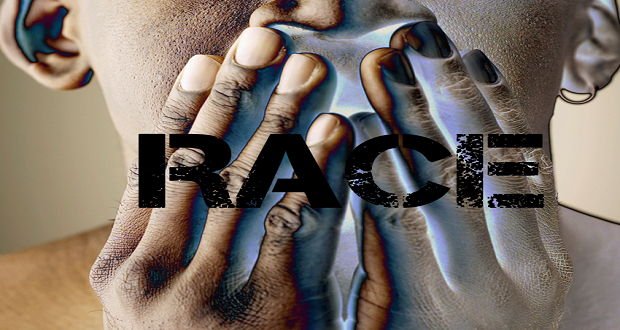The Winters Group specializes in mapping the intersection between popular approaches to diversity, equity, inclusion and justice (DEIJ) and corporate spaces in order to address inequities faced by marginalized groups. Even though many organizations espouse the same desired outcomes, their ideologies and strategies in this work have not been the same. As a matter of fact, until recently (after the Black Lives Matter protests of 2020), “justice” was rarely included in organizations’ definition or goals (especially in the corporate world). I daresay that even those organizations that are now using “justice” as a part of their nomenclature have little understanding of what it means or how to execute it.
Justice can be categorized in one of several ways: as distributive (determining who gets what), procedural (determining how fairly people are treated), retributive (determining how people are punished for wrongdoing) and restorative (repairing what is broken and compensating victims for past harm). There has been little attention to intentionally executing these categories of justice in the workplace.
Corporate reasons for attending to social injustice have morphed over the years from compliance (legal mandates) in the 70s, to assimilation (helping newcomers to the hallowed corporate halls “fit in”) and morality rhetoric of the 80s, to a capitalistic–driven “business case for diversity” started in the 90s. This business case rationale, still popular today, advances the notion that as U.S. demographics shift from majority white to majority Black and Brown populations, a focus on hiring people from these groups will enhance the organization’s profits. Diversity practitioners set out to “prove” that targeting consumer marketing efforts to the growing “minority” populations leads to positive financial returns. The mantra “diversity is not only the right thing to do, but also the right thing to do for business” is a popular cliché touted by many corporate leaders attempting to merge the moral with the capitalistic.
It is certainly not a binary. Organizations can do good and be good at the same time. Intentionally applying a justice framework enhances overall organizational performance. As an example, consider the emergence and growing popularity of B Corporations — those that certify they will balance purpose with profits. B Corporations are legally required to consider the impact of their decisions on workers, customers, suppliers, community and the environment. Currently, close to 4,000 companies globally are certified B corporations, using business as a force for good.
The compliance, assimilation and “attracting new markets” arguments for advancing equity have generally prioritized profit over purpose. “The right thing to do” motivation for DEI in corporate spaces has been most often thought of in moral terms. While morality is important, it is different from justice. Morality is about a personal sense of right and wrong, whereas justice is about taking the necessary action to ensure that one’s moral code is upheld. Dr. Martin Luther King, Jr., in his letter from the Birmingham jail argued that “a just law is a man-made code that squares with the moral law or the law of God… I would be the first to advocate obeying just laws. One has not only a legal but a moral responsibility to obey just laws. Conversely, one has a moral responsibility to disobey unjust laws. I would agree with St. Augustine that ‘an unjust law is no law at all.'”
'The right thing to do' motivation for DEI in corporate spaces has been most often thought of in moral terms. While morality is important, it is different from justice. Share on XIn organizations, obeying unjust policies is akin to what Dr. Martin Luther King, Jr. and St. Augustine called obeying unjust laws.
Mapping the intersection between past corporate diversity and inclusion approaches and what is required to integrate sound social justice actions requires an understanding of this perhaps nuanced difference between morality and justice. One can abhor racism from a moral perspective (“It is wrong!”) but do very little to bring about justice.
As Brittany J. Harris wrote in last week’s feature post, organizations were quick to issue statements last summer that by and large acknowledged the immorality of the rampant examples of blatant racism, but perhaps did little to acknowledge complicity and take actions toward justice.
We are witnessing more calls for justice from workers today. No longer are they willing to passively let the leaders define effective DEIJ actions. BIPOC employees and aspiring allies are educating themselves on inequitable internal and external policies.
We are witnessing more calls for justice from workers today. No longer are they willing to passively let the leaders define effective DEIJ actions. BIPOC employees and aspiring allies are educating themselves on inequitable… Share on XOrganizations really serious about justice must interrogate their policies with an equity and justice lens. To provide an example of what this might look like, here I will outline three types of internal HR policies and two external polices that often perpetuate injustice.
Succession Plans
Many organizations do not have specific succession policies that include goals for diversity. I too often hear when I ask about specific policy language related to increasing diversity of BIPOC in the succession plans that there is nothing concrete beyond a “desire.” If an organization is serious about justice, these policies must be specific. For example, “All succession plans must include XX% BIPOC talent.” I am surprised at the number of organizations that do not have specific succession policies at all. This may be very intentional, allowing leaders to make up arbitrary rules as needed to suit the outcomes that they desire. The existence of succession plans that do not include BIPOC or lack of policies at all are both acts of injustice.
Even with the existence of succession plans that purportedly intentionally include BIPOC talent, there are many loopholes that uphold the status quo. For example, influential leaders are able to bypass the process with their “favorite” candidate, or, due to biases, the BIPOC employees in the succession pool are never deemed “ready” for the role. Most succession plans lack transparency in that employees do not know if they are included. This often leads to higher turnover rates among BIPOC who become frustrated by their lack of progress. Another unjust practice is “downgrading” roles when BIPOC are picked — a previous VP role now becomes a director role. Another client, in the absence of a formal succession plan, elevated a BIPOC to a role so they could boast having their first high-ranking Black person at the company. Her predecessor, who retired, left the function in pure disarray, losing clients and money. This BIPOC employee is now being blamed and is in jeopardy.
The existence of succession plans that do not include BIPOC or lack of policies at all are acts of injustice. Even with the existence of succession plans that purportedly include BIPOC talent, there are many loopholes that uphold… Share on XIf you are BIPOC or aspiring ally, please request to see your organization’s written succession policies. If you are told that there are none, lobby for their development and transparency in knowing if you/BIPOC colleagues are a part of the plan. As you advance to higher-level positions, make sure you insist on having the resources you need, protection from being blamed for your predecessors’ actions, and the proper development for your success.
If you are BIPOC or an aspiring ally, request to see your org's written succession policies. If you're told there are none, lobby for their development and transparency in knowing if you/BIPOC colleagues are a part of the plan. Share on XJob Descriptions
They are notorious for being outmoded, inaccurate and sometimes written specifically for a particular individual. Job duties change over time, and too often, the descriptions of the duties do not. In an example of cascading inequities, inaccurate job descriptions can then be used to justify disciplinary action. Additionally, job requirements such as number of years of experience are often inflated and disproportionately keep BIPOC from being considered. When managers write the description, they may include qualifications that they know are unique to the person they want in the job.
Job requirements like years of experience are often inflated and disproportionately keep BIPOC from being considered. When managers write the description, they may include qualifications that they know are unique to the person they… Share on XAs a BIPOC employee, make sure that your job description is accurate and know how it is used (e.g., as a part of your performance evaluation and or promotion decisions).
Performance Evaluation Policies and Practices
The Winters Group conducts equity audits for clients. We often find, as corroborated by national studies, that BIPOC disproportionately receive lower performance ratings than white employees. One recent client acknowledged that their own internal auditing discovered this disparity, and they required every leader to defend their ratings… which led to higher ratings for a number of BIPOC employees. Organizations should have a policy of interrogating employee ratings on a regular basis and making adjustments.
The Winters Group conducts equity audits for clients. We often find, as corroborated by national studies, that BIPOC disproportionately receive lower performance ratings that white employees. Share on XAs a BIPOC employee or ally, if you question your rating or the use of ratings more generally in your org, speak up and ask that regular data be reported transparently on justice in ratings.
Investment Policies
It is important to be knowledgeable about organizations’ financial investment practices. What stocks are included in the investment portfolio? Are there investments in companies that are explicitly or implicitly racist? The asset management platform OpenInvest includes a “Racial Justice Cause” indexing tool that allows investors and asset managers to customize their portfolios to prioritize companies with a positive track record on issues like workforce diversity. The tool also looks at firms that it judges to have a history of race-related lawsuits and controversies involving fair treatment, as well as those that heavily pollute in areas more populated by people of color. Hundreds of companies are included in OpenInvest’s Racial Justice Cause; however, only 70 of the S&P 500 currently meet the criteria.
Investment decision makers should be trained to uncover present and past injustices and change policies and practices accordingly to include reparations. BIPOC and aspiring allies should know where the organization is investing its assets — ask for full transparency and restoration.
Investment decision makers should uncover present and past injustices and change policies accordingly to include reparations. BIPOC and aspiring allies should know where the org is investing its assets and ask for full transparency… Share on XAttracting New Markets
While targeting new customers or clients can be nuanced and should be considered carefully against questions of morality and justice, increasing access to critical goods and services for BIPOC consumers is the right thing to do. For example: the digital divide is a persistent issue impacting access to technology; the dearth of large grocery chains limits access to healthy foods; inequitable access to banks and lending options is rampant. These are all serious concerns that disproportionately impact BIPOC communities. Another way injustice manifests in attracting new markets is in organizations setting higher prices for lower service levels. Those making decisions in the absence of a justice lens may be oblivious to or minimize such past or present harm. Those charged with marketing responsibilities should understand the historical and present-day barriers for BIPOC communities and develop strategies that are justice-centered.
Ask yourself and your colleagues: How are you intentionally using a justice lens in policymaking or other aspects of your organization?
Those charged with marketing responsibilities should understand the historical and present-day barriers for BIPOC communities and develop strategies that are justice-centered. Share on X



















